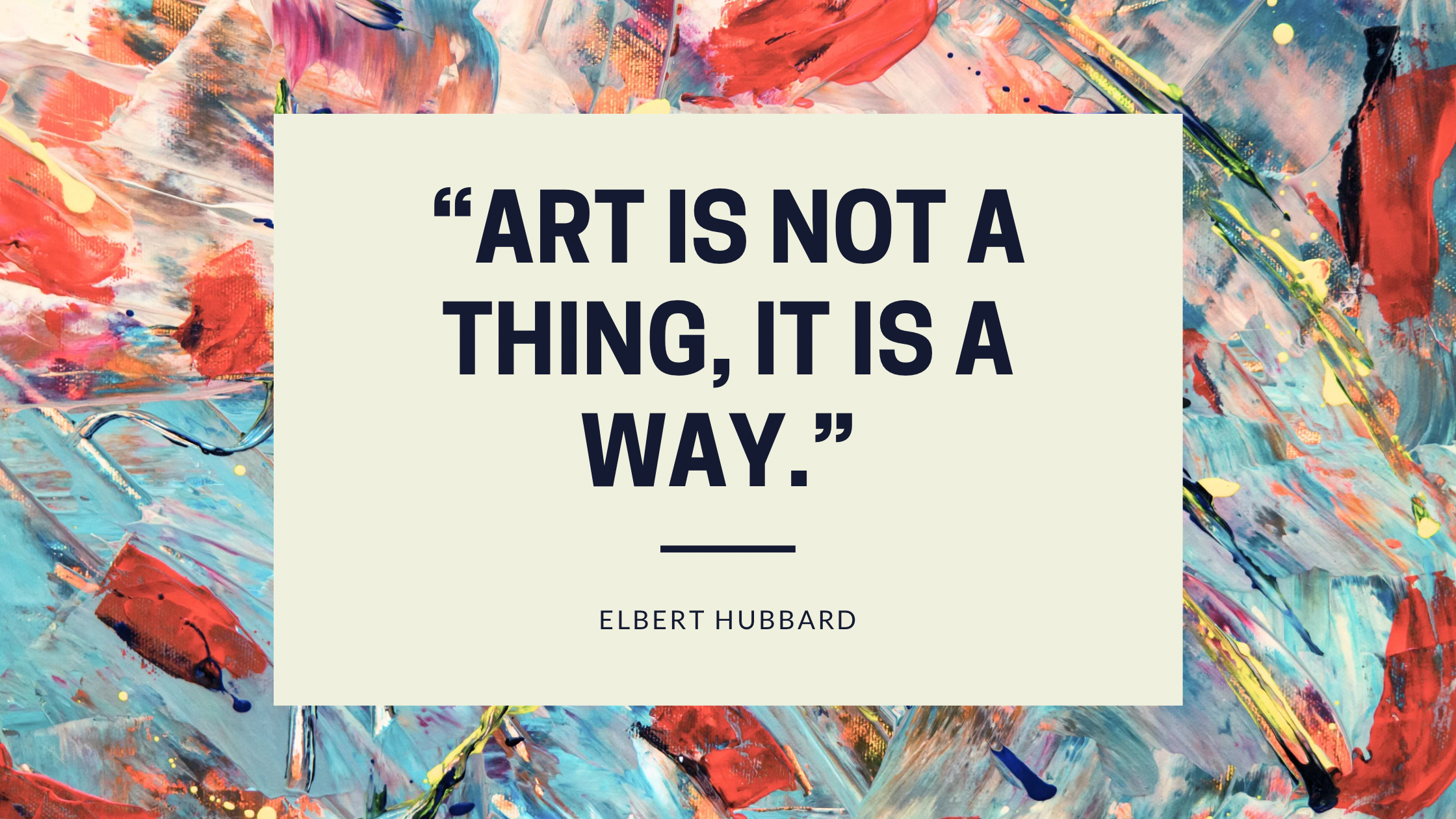Think Like an Artist
I really love this quote by Elbert Hubbard, but I don’t necessarily agree with it. Or, well, maybe I should say I don’t think it’s expansive enough. Art is a process, Art is something that is created, and Art is a way of thinking. Read on to learn how we help children “think like an artist” every day during our track out art camps and classes.
Art often starts with an idea, but what even is an idea and how do we turn that idea into art? These big questions are the foundation for thinking like an artist. A few of the topics I focus on to grow creativity and problem solving in the classroom are brainstorming, researching, troubleshooting, and collaborating.
Brainstorm: “I don’t know what to make!”
When a student says they don’t know what to make, I usually ask what they like or are interested in that day and what materials they’re feeling drawn to. Nine times out of ten, they’ll yell “OH!” and go gather the supplies to start their project.
Some days, however, a student may need a little more direction. We all have days like this, even professional artists! One tool we use in this circumstance is a random idea generator. I have different baggies filled with idea cards titled color, season, subject (animal, tv show/video game/book character, fairy, etc.), location (mountains, ocean, forest, outerspace, etc.), and action (reading, playing an instrument, eating, etc.). They will draw from each baggy and lay out what they get. Maybe they get white winter fairy snowboarding in the mountains. Or maybe it’s a pink panda having a picnic in outer space! Whatever it is, they can choose to use those themes or draw others to make a different theme. More often than not, the cards serve as a springboard for original ideas!
Research: “I have an idea, but what now?”
Our next step is research. I include planning in this category as they tend to go hand in hand for me. This process looks different from student to student, but often includes looking at work made by professional artists, doing mini sketches of elements they want to include in their project, or looking for the colors and materials they want to use.
Troubleshoot: “This isn’t going the way I’d hoped.”
Troubleshooting is defined as discovering why something does not work effectively and making suggestions about how to improve it. What a vital and versatile skill to build! What do we do when our project isn’t turning out the way we’d imagined and planned? What happens when glue or paint gets spilled on your project? How do we fix our project if it won’t stand up properly, the color isn’t right, or the whole thing just feels off? Practically speaking, I usually start by complimenting their work because, I mean, have I mentioned how much I love kid art?? Then I ask what they don’t like or what they feel like is not going well. That usually leads to more conversation and sometimes suggestions. Sometimes we step away for a snack and come back with fresh eyes!
This is a skill that extends outside of the art classroom! Practicing troubleshooting can help kids think through the next steps of their tricky homework or what to do if they spill cereal on the kitchen floor.
Collaborate: “Should I make this out of clay or paper?”
I cannot tell you how many times a child has asked me a question like this and another student answers instead. I’ve found that kids love to teach and help each other. As often as possible, I sit back and let the kids help each other. Pablo Picasso and George Braque are excellent examples of artistic collaboration: together, they created Cubism! They worked together, learned from each other, and were better artists because of it.
Creativity Takes Courage
It takes incredible artistic skill, passion, and practice for an artist to recreate a painting, drawing, or sculpture by a master artist. However, most assignments or projects do not allow a person to turn in art that has already been done. That is why cultivating creativity is just as important as building technical skill for an artist. The artist Matisse once said, “creativity takes courage” and, let me tell you, these kids have courage!
If you would like for your child to learn how to “think like an artist,” consider signing them up for one of our trackout art camps or children’s art classes. Not sure what the best fit for your child will be? Contact us today to discuss how we can best meet the needs of your child!


